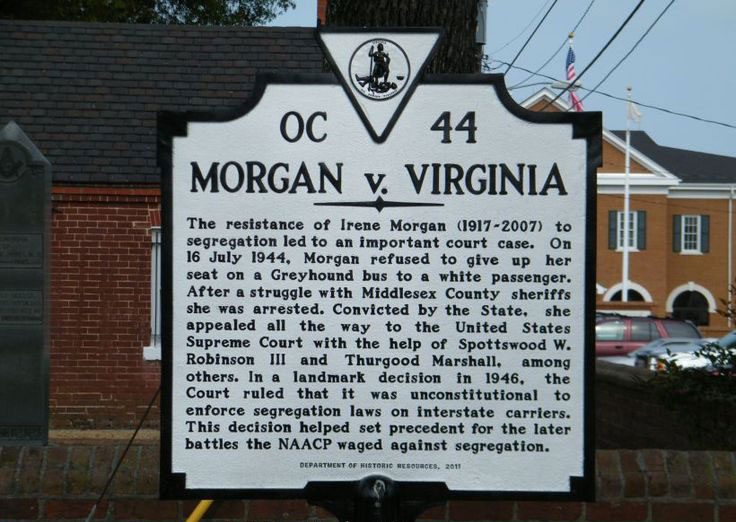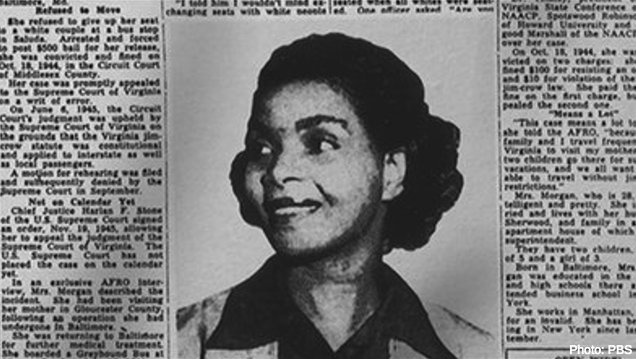
Share This Article On Social Media:
Explore Similar Categories:

As you travel through the town of Saluda in Middlesex County, Virginia, you will find a historical marker in front of the Historic Middlesex County Courthouse. This marker signifies a paramount Supreme Court decision that set precedent for the inevitable battles against segregation that would come in the future.
It was July in the year 1944. Irene Morgan was leaving Gloucester, Virginia after a visit with her mother, where she boarded a segregated Greyhound bus heading to Baltimore, Maryland, where she would be reuniting with her husband.
Morgan was seated next to a fellow African American woman, a mother, with her infant upon her lap, when two white passengers boarded the bus.
The bus was already quite full except for two vacant seats in the rear. The driver of the bus declared that Morgan and her seatmate move to the “colored section” of the bus in order for the two white passengers to be able to take a seat.
At this time in Virginia, the law required the segregation of bus passengers.
Morgan refused to move. Her argument was that Greyhound they were on was an interstate bus, and therefore, the Virginia law did not apply.
After refusing to move, and even attempting to prevent her seatmate from complying with the bus driver’s request, the driver immediately drove to the jail located in Saluda, where Morgan was arrested, but not without a fight. She was charged with resisting arrest and a segregation offense. She would later plead guilty to the resisting arrest, but she would continue to fight the segregation offense.
Morgan’s legal team would soon have the backing of Thurgood Marshall, William H. Hastie and the NAACP. On June 6, 1945, the Virginia Supreme Court of Appeals ruled against Morgan, but still she fought.
In October of 1945, Morgan and her legal team appealed their case to the U.S. Supreme Court, and this time, she won. The U.S. Supreme Court ruled in favor of Morgan on the basis that the Virginia law was unconstitutional, and the law was therefore stricken along with similar laws in other states.
This ruling would lead to many more battles in the Civil Right movement, and the final fall of Jim Crow law.
To learn more about Irene Morgan and Middlesex’s local black history, we invite you to visit the Middlesex County Museum & Historical Society in Saluda where you will find many news articles and documents surrounding the Morgan V. Virginia case.



